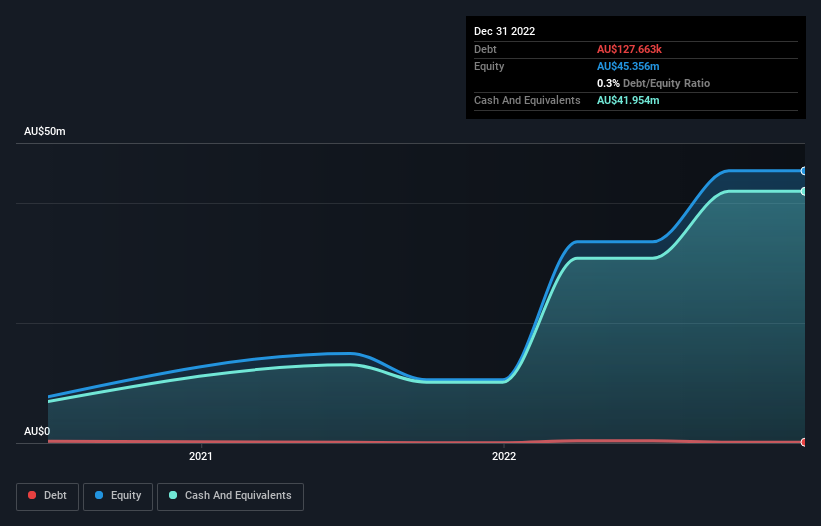- Australia
- /
- Healthcare Services
- /
- ASX:MAP
We're Not Very Worried About Microba Life Sciences' (ASX:MAP) Cash Burn Rate
Even when a business is losing money, it's possible for shareholders to make money if they buy a good business at the right price. For example, although Amazon.com made losses for many years after listing, if you had bought and held the shares since 1999, you would have made a fortune. Nonetheless, only a fool would ignore the risk that a loss making company burns through its cash too quickly.
So should Microba Life Sciences (ASX:MAP) shareholders be worried about its cash burn? In this report, we will consider the company's annual negative free cash flow, henceforth referring to it as the 'cash burn'. First, we'll determine its cash runway by comparing its cash burn with its cash reserves.
View our latest analysis for Microba Life Sciences
When Might Microba Life Sciences Run Out Of Money?
A cash runway is defined as the length of time it would take a company to run out of money if it kept spending at its current rate of cash burn. Microba Life Sciences has such a small amount of debt that we'll set it aside, and focus on the AU$42m in cash it held at December 2022. Looking at the last year, the company burnt through AU$14m. Therefore, from December 2022 it had 3.0 years of cash runway. A runway of this length affords the company the time and space it needs to develop the business. Depicted below, you can see how its cash holdings have changed over time.

How Well Is Microba Life Sciences Growing?
At first glance it's a bit worrying to see that Microba Life Sciences actually boosted its cash burn by 50%, year on year. The revenue growth of 9.5% gives a ray of hope, at the very least. In light of the data above, we're fairly sanguine about the business growth trajectory. Clearly, however, the crucial factor is whether the company will grow its business going forward. So you might want to take a peek at how much the company is expected to grow in the next few years.
How Easily Can Microba Life Sciences Raise Cash?
While Microba Life Sciences seems to be in a fairly good position, it's still worth considering how easily it could raise more cash, even just to fuel faster growth. Issuing new shares, or taking on debt, are the most common ways for a listed company to raise more money for its business. Commonly, a business will sell new shares in itself to raise cash and drive growth. We can compare a company's cash burn to its market capitalisation to get a sense for how many new shares a company would have to issue to fund one year's operations.
Microba Life Sciences has a market capitalisation of AU$101m and burnt through AU$14m last year, which is 14% of the company's market value. As a result, we'd venture that the company could raise more cash for growth without much trouble, albeit at the cost of some dilution.
So, Should We Worry About Microba Life Sciences' Cash Burn?
On this analysis of Microba Life Sciences' cash burn, we think its cash runway was reassuring, while its increasing cash burn has us a bit worried. Considering all the factors discussed in this article, we're not overly concerned about the company's cash burn, although we do think shareholders should keep an eye on how it develops. Taking an in-depth view of risks, we've identified 4 warning signs for Microba Life Sciences that you should be aware of before investing.
Of course Microba Life Sciences may not be the best stock to buy. So you may wish to see this free collection of companies boasting high return on equity, or this list of stocks that insiders are buying.
New: Manage All Your Stock Portfolios in One Place
We've created the ultimate portfolio companion for stock investors, and it's free.
• Connect an unlimited number of Portfolios and see your total in one currency
• Be alerted to new Warning Signs or Risks via email or mobile
• Track the Fair Value of your stocks
Have feedback on this article? Concerned about the content? Get in touch with us directly. Alternatively, email editorial-team (at) simplywallst.com.
This article by Simply Wall St is general in nature. We provide commentary based on historical data and analyst forecasts only using an unbiased methodology and our articles are not intended to be financial advice. It does not constitute a recommendation to buy or sell any stock, and does not take account of your objectives, or your financial situation. We aim to bring you long-term focused analysis driven by fundamental data. Note that our analysis may not factor in the latest price-sensitive company announcements or qualitative material. Simply Wall St has no position in any stocks mentioned.
About ASX:MAP
Microba Life Sciences
Provides microbiome testing, supplements, and analysis services in Australia, Europe, New Zealand, the United Arab Emirates, the United Kingdom, the United States, Asia, and Ireland.
Excellent balance sheet with slight risk.
Similar Companies
Market Insights
Community Narratives



